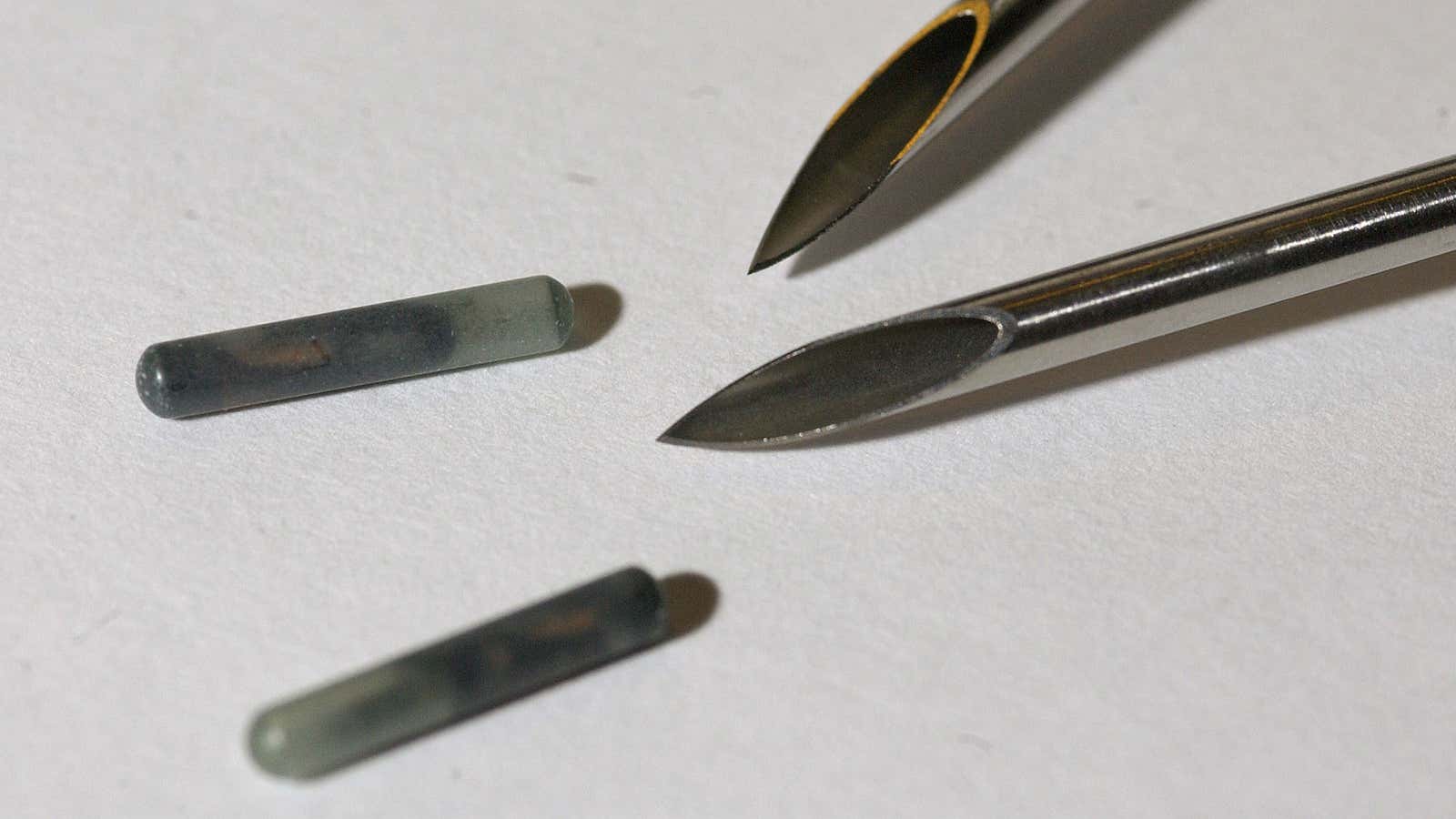Like many of us, Australian Shanti Korporaal fell in love with “Star Wars” as a kid and dreamed of one day being a Jedi. But unlike most of us, at 27 she’s made at least part of that dream a reality.
According to the Washington Post, Korporaal, co-founder and director of seven small tech companies in Australia and Cambodia, has had both of her hands implanted with tiny, unpowered devices. One is a radio-frequency identification chip that opens her office garage door with the wave of her hand, and one is a near-field communication chip, which stores her health and contact information. The latter uses the same technology as Apple Pay, and she hopes to be able to use it like a wallet. They’re both about the size of the head of a match, and sit in the skin between her thumb and index finger.
“I can open doors without a key and [others] can’t,” she told the Post.
Getting these chips is an outpatient procedure. Korporaal had a doctor insert hers through a large needle with a little local anesthetic, although some professional body piercers can do it, too. “It’s a really simple, two-second procedure,” she told the Post. “It’s in-and-out, in terms of the needle.”
Although implantable chips to open doors and pay for dinner may seem straight out of science fiction, but they’ve been in medicine for a while. Pacemakers (pdf) are inserted just under the collarbone to help control irregular heartbeats, and many women have been using implants in their uteruses to prevent pregnancy since the middle of the 20th century. Other forms of birth control can be inserted into a woman’s upper arm, where they release a steady dose of hormones to almost guarantee pregnancy prevention.
Korporaal sees her chips as nothing more than a mechanical iteration of other kinds of body modification, like losing weight with diet and exercise. “You’re literally making small incremental tweaks to your body over time,” she told the Post, “using data from responses to your body to effect change.”
